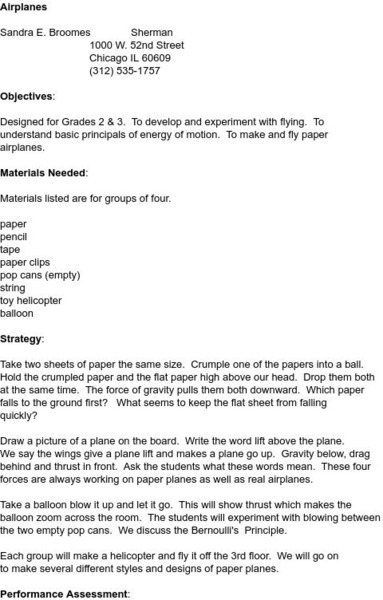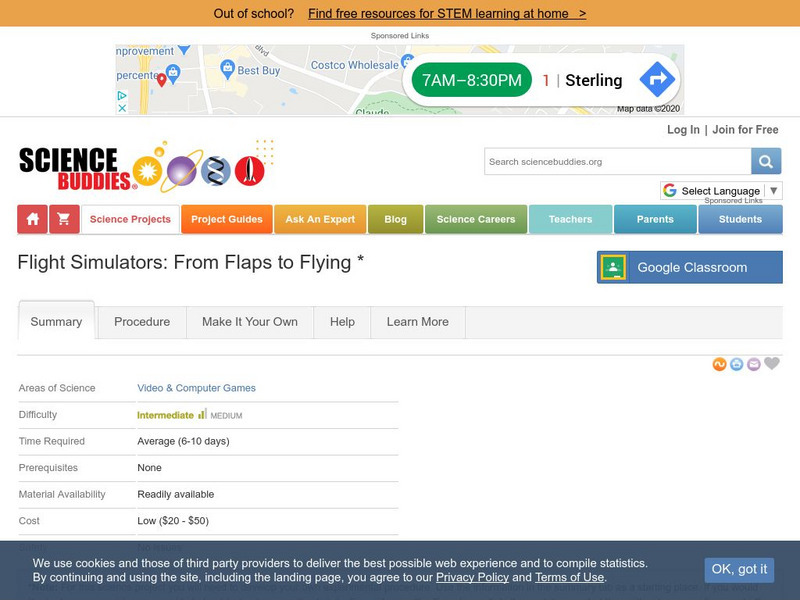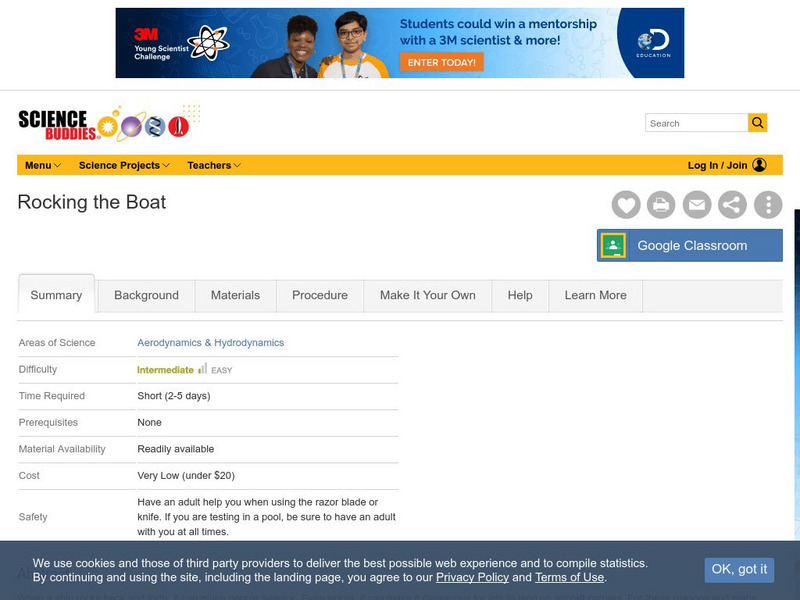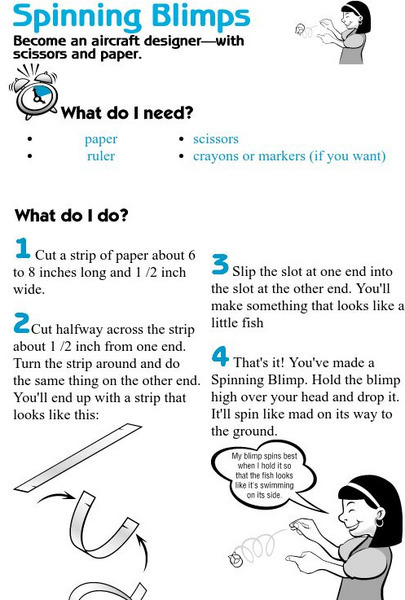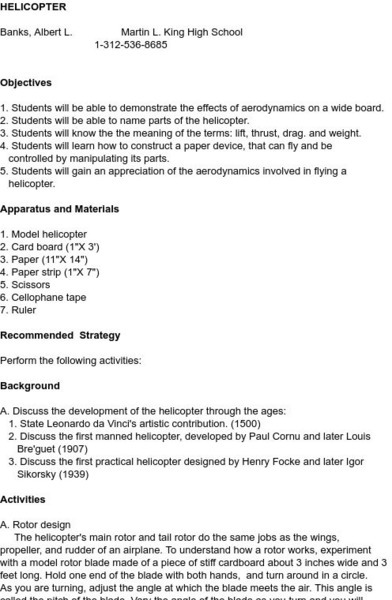Hi, what do you want to do?
Other
Ken Blackburn: Paper Airplanes
Information on paper airplane designs, history, and contests. Click on "Paper Airplane Aerodynamics" for an analysis of the world record holding paper airplane design.
Smithsonian Institution
Smithsonian Learning Lab: How Things Fly: Activities for Teaching Flight
Through this series of three lessons, students will gain an understanding of the basics of flight. They will learn about the four forces of flight and practice their observation skills through a number of fun experiments. In addition,...
Science and Mathematics Initiative for Learning Enhancement (SMILE)
Smile: Airplanes (2 3)
This paper airplane lesson plan helps students learn about certain concepts like air resistance, motion, and aerodynamics.
Science Buddies
Science Buddies: Flight Simulators: From Flaps to Flying
Before pilots ever step behind the controls of a real jet they've already logged thousands of virtual air miles. It might not qualify you to fly a real jumbo jet, but you too, can learn the logistics of aviation by experimenting with the...
Science Buddies
Science Buddies: Rocking the Boat
Become an engineer for a day and discover the best way to keep from rocking the boat in this engineering science fair project. When a ship rocks back and forth, it can make people seasick, but also it makes it dangerous for jets to land...
Exploratorium
Exploratorium: Hoopster
Students create their own airplane using straws and other materials and learn the principles of aerodynamics.
NASA
Nasa: Beginner's Guide to Aeronautics
A website that catalogs information and activities for how airplanes work. The concept of aerodynamics is explained in full detail.
The Franklin Institute
Franklin Institute Online: The Challenge of Flight
Think about the challenges that faced the Wright Brothers, then see if you can design and fly your own model aircraft. There are other sources provided to help you along the way.
Exploratorium
Exploratorium: Spinning Blimps
Students create a blimp and then experiment with the design to improve its aerodynamics.
NASA
Nasa: Flight: What Is Drag?
Understand the concept of drag and find out how it affects the movement of airplanes.
Science Buddies
Science Buddies: Winglets in Wind Tunnels
Have you noticed the little wing projections on the wings of jets? This Science Buddies project helps you understand whether these fins help stabilize airplanes. The Science Buddies project ideas are set up consistently beginning with an...
Science Buddies
Science Buddies: Why Winglets?
Make a paper airplane and experiment with adding winglets to it to test its performance. The Science Buddies project ideas are set up consistently beginning with an abstract, objective, and introduction, followed by a section on terms,...
A&E Television
History.com: The History of Flight: From Breakthroughs to Disasters
From hot-air balloons floating over Paris to a dirigible crashing over New Jersey, here are some of the biggest moments of aviation history. Below is a timeline of humans' obsession with flight, from da Vinci to drones. Fasten your...
PBS
Pbs: American Experience: The Wright Stuff
Companion website to the PBS documentary on the Wright Brothers and their contributions to aviation.
Michigan Reach Out
Nasa Trc: Flying Wing
In this lesson plan students can make a flying wing and trouble-shoot until the wing glides smoothly.
PBS
Pbs Nova: Pilot the Wright Brothers' Flyer
In this interactive, find out how the Wright brothers' design of the first flyer provided lift and speed, and allowed the pilot to make adjustments in response to changes in wind speed and direction.
TryEngineering
Try Engineering: Engineered Sports
Students work in teams to investigate how aerospace engineering relates to sports, especially golf ball design and the physics of bounce. They use this information to determine whether these aerospace principles can be applied to...
Other
All Star: Airfoils
The basic theories of aeronautics are explained through several airfoil activities and animations. Click on Level 2 or 3 for an easier reading level.
Science and Mathematics Initiative for Learning Enhancement (SMILE)
Smile: Lab Activity: Helicopter
The Illinois Institute of Technology lets students investigate the aerodynamics of a helicopter, focusing on the variables which effect the lift, thrust, drag, and weight. Students investigate the effects of aerodynamics on a wide board.
Science and Mathematics Initiative for Learning Enhancement (SMILE)
Smile: Lab Work: Come Fly With Me
This site by the Illinois Institute of Technology lets students use a vacuum cleaner hose, ping pong balls, straws and other materials to investigate the effect of moving air upon the surfaces which it hits. Principles are applied as...
MadSci Network
Mad Scientist Network: How Do Planes Fly Upside Down?
Question and answer regarding the physics principles that apply to a plane flying upside down.
Curated OER
Wikipedia: National Historic Landmarks in California: Unitary Plan Wind Tunnel
This wind tunnel built in the 1950s allowed commercial and military aircraft as well as the Space Shuttle to be aerodynamically tested.






